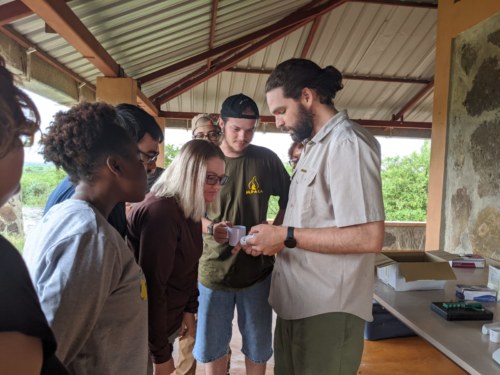
On Monday, students were introduced to the basics of anthropometrics, which are fundamental to understanding human physical variations in populations. Students have come to find out the importance of measuring weight, height, and body fat percentages in assessing diets and life-histories. As emphasized by our instructor, Zane, local adaptations influence much of the body form and size of an individual. Learning about the physiological and genetic adaptations of various populations, students could easily relate the Bergmann’s and Allen’s rules, which are ecogeographical explanations of body forms favouring large body size in cold climates, and small bodies in warm climate, and on the other hand, linear bodies in warm climates, and more rounded and compact bodies in colder environments, respectively.
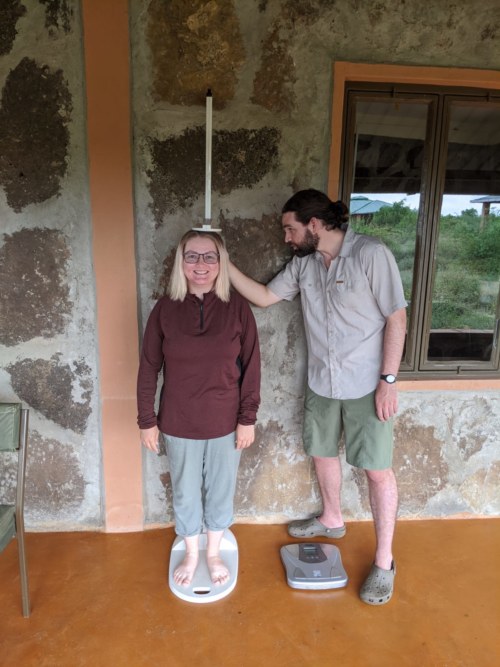
Amber gets her height measured. Photo credit: Medina Lubisia.
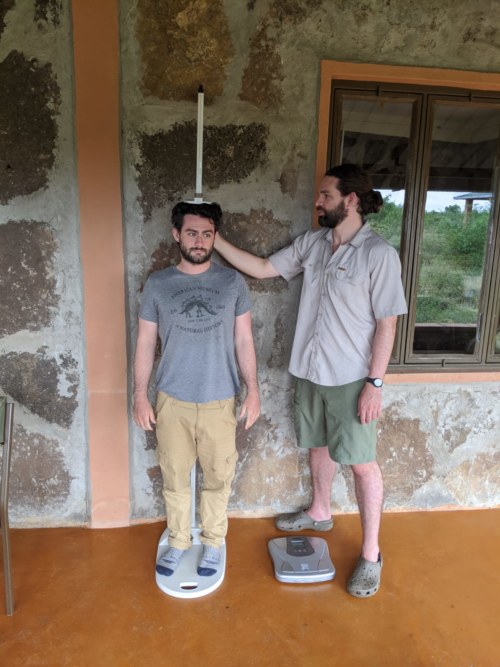
Zak is ready for the anthropometrics! Photo credit: Medina Lubisia.
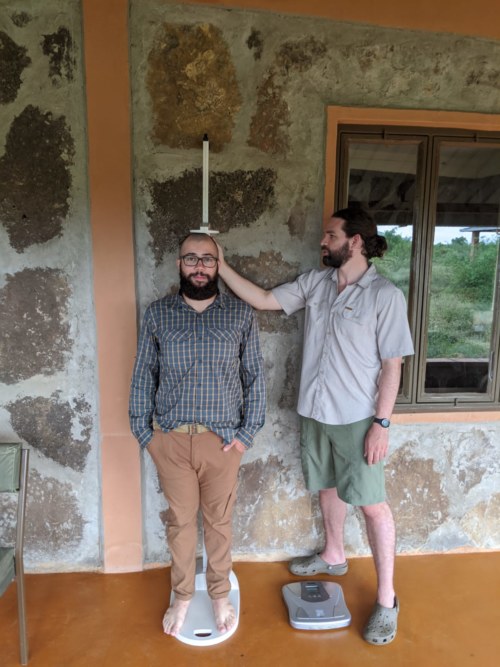
Zane measuring Joe’s height. Photo credit: Medina Lubisia.
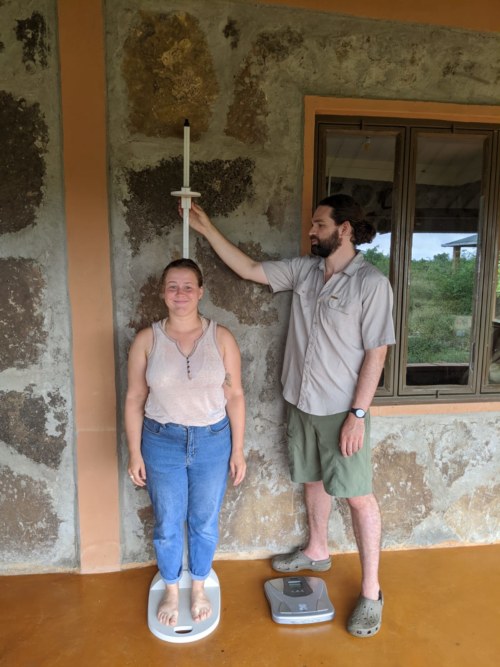
Becca getting her height measured. Photo credit: Medina Lubisia.
The past week in cultural immersion saw the students spend much of their time in villages, interacting and discussing more of the cultural aspects of life with local people. Students visited Watalii village, where they had an in-depth discussion with the elders, and Ileret primary school, where students had the opportunity to interact with primary school kids. We finished with a visit to a farm at Aiy Berte.
The highlight of the week was a bird-watching activity with the locals. A women bird-watching club was started by TBI researchers last year, with the aim of educating the locals about the importance of biodiversity and preservation of natural areas. Equipped with binoculars, the women lead us to the beach where we had the opportunity to watch pelicans, herons, Egyptian geese, and spur-winged lapwing birds feed. Students presented their various projects on Friday to mark the end of the module. The best part of this course has been the exchange of information between the students and local people. It has been a great a experience for the students, as they have gained an authentic experience about societal norms and practices of the Daasanach people.
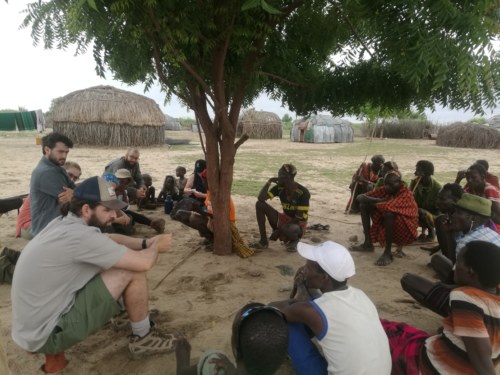
Students in a community discussion at Watalii. Photo credit: Medina Lubisia.
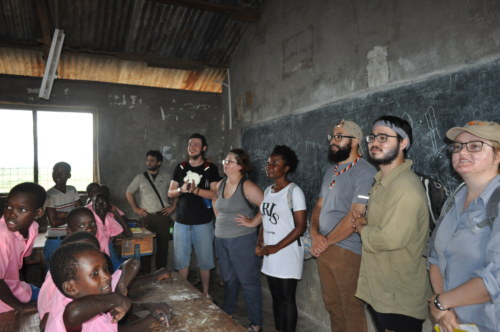
Field School students talking to grade 3 class at Ileret primary. Photo credit: Wambui Mbogo.
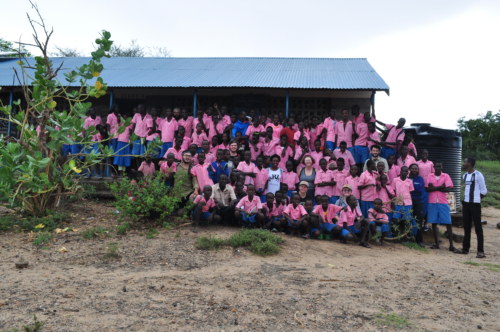
A group photo with Ileret primary school students. Photo credit: Wambui Mbogo.
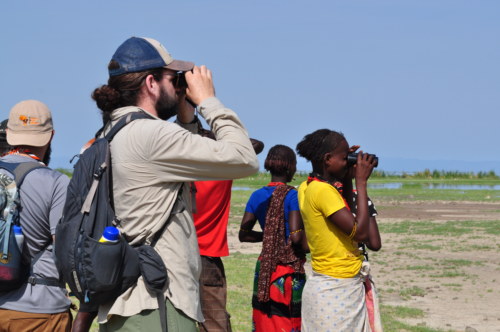
Zane gets a nice view of birds. Photo credit: Wambui Mbogo.
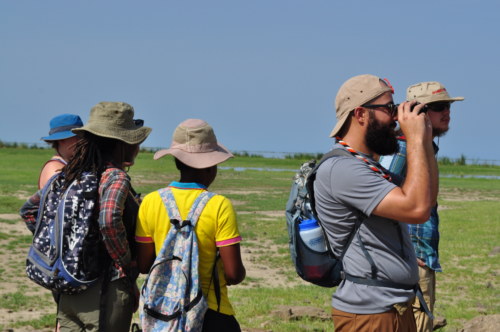
Joe enjoyed bird-watching! Photo credit: Wambui Mbogo.
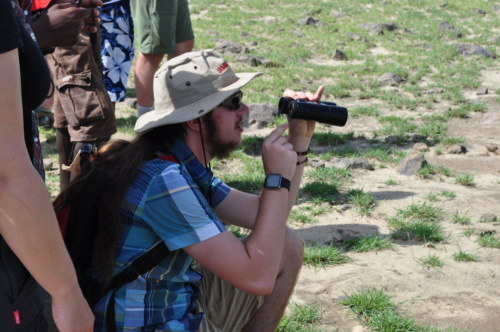
Michael watching the spur-winged lapwings. Photo credit: Wambui Mbogo.
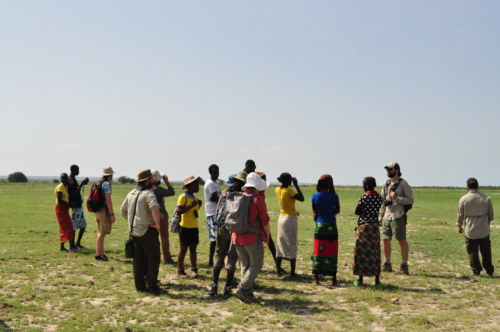
Field School students with the bird-watching women’s club assembling to watch birds. Photo credit: Wambui Mbogo.
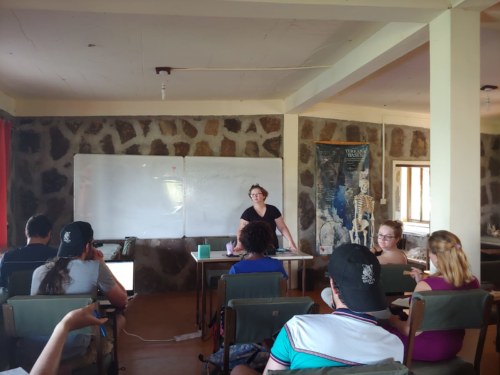
Emma engaging the class during her presentation on menstrual health. Photo credit: Medina Lubisia.

Clara presenting her project on girl-child education. Photo credit: Medina Lubisia.
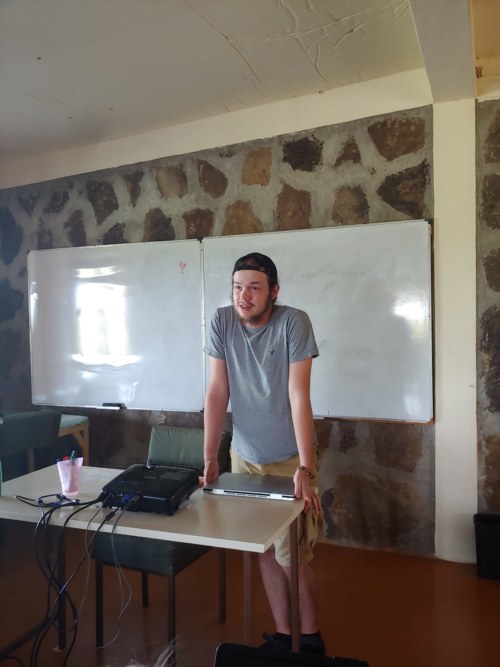
Michael discusses data collection methods used in his project. Photo credit: Medina Lubisia.
Stay tuned for more updates!





